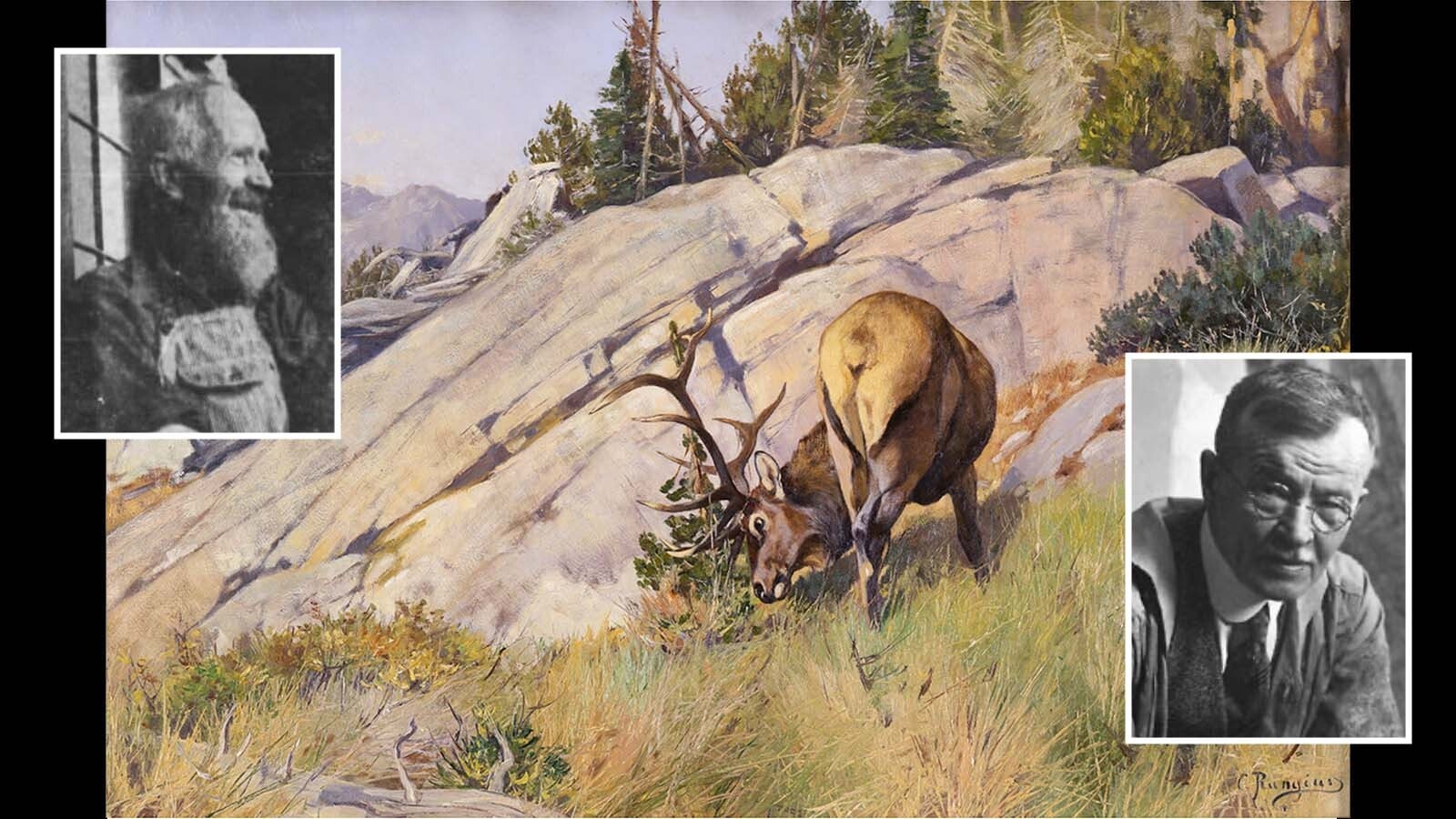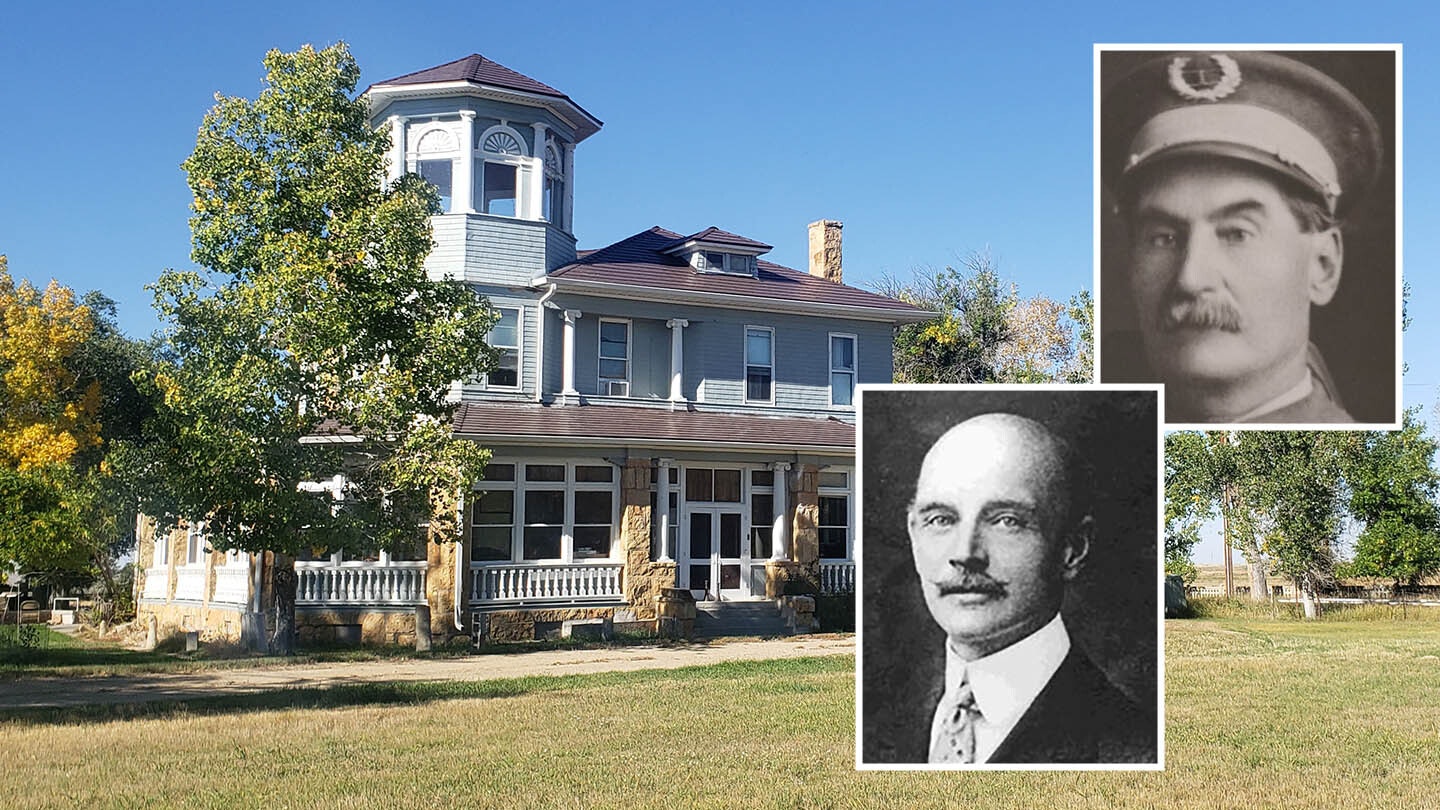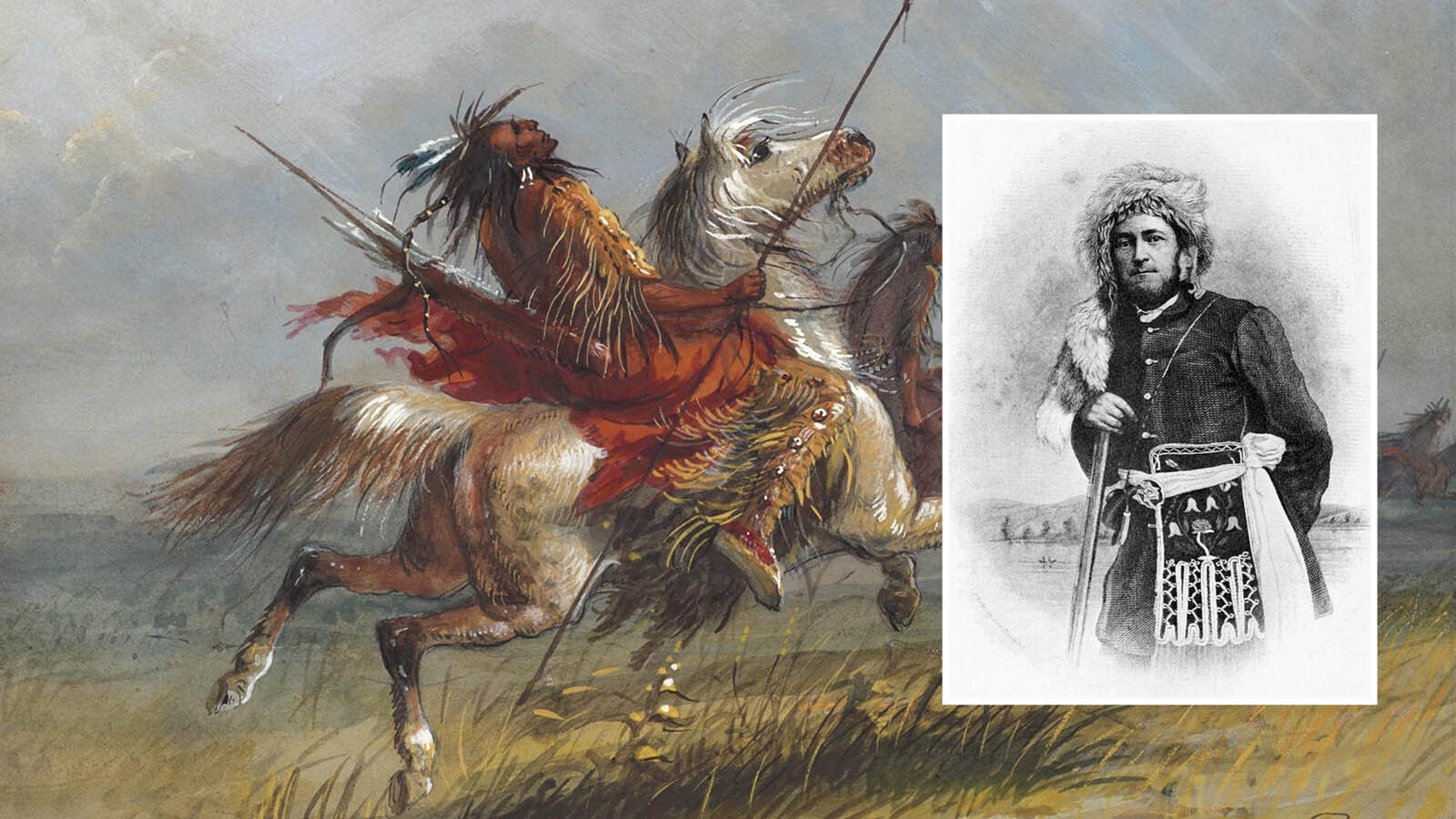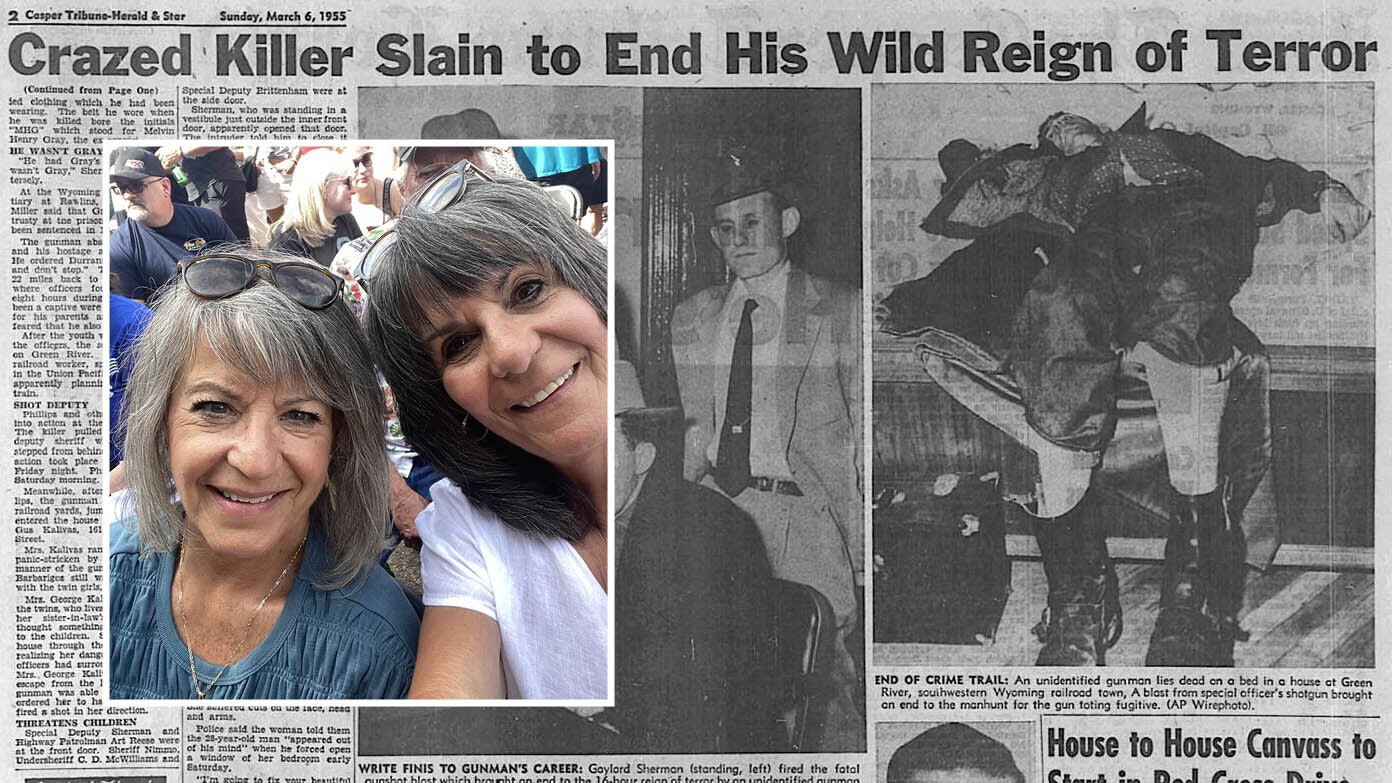A Frenchwoman from New York came to the Wagonhound, a large ranch outside of Douglas in a snowstorm. Anouk Masson Krantz readily admits she came to Wagonhound carrying not only her cameras, but also a lack of understanding.
Wyoming’s open spaces, the seeming emptiness of the landscape, was the inspiration she sought. She knew at Wagonhound she would find “the power of nature, these amazing landscapes.”
In documenting the lives of the men and women who lived and worked there, she came to understand “all my knowledge about the cowboy around this western way of life, were all sort of misconceptions.” She said, “Once I put my foot through the door, I realized this culture wasn’t dying, but was very much still alive.”
American Indians have deep connections to the high plains of Wyoming and the lands that are now a part of the Wagonhound Land and Livestock, but for myriad reasons they no longer live and hunt there. In the 1800s thousands of people traveled across the landscape. Following Indian trails and the North Platte River were fur trappers and traders, then emigrants, and eventually homesteaders who staked claims and began raising livestock and a few crops.
The high plains roll through this region, becoming less flat, and more rugged as they butt up against the Laramie Mountain Range, with its signature Laramie Peak to the south and Casper Mountain at the northwest end of the arc.
Wagonhound Land and Livestock now encompasses more than 300,000 acres. It is a merging of homesteads carved out by people who came West seeking opportunity and land. Those original settlers filed claims of 160 acres, built cabins, grubbed sagebrush, brought in cattle, horses, and sheep.
Many of them stayed on their land for generations, expanding holdings by buying out a neighbor – or sometimes marrying the neighbor’s daughter. In this country, it is impossible to make a living on 160 acres; there isn’t enough grass for livestock so the homesteads consolidated to larger and larger properties.
By the time she arrived in Wyoming in 2021, Krantz had already learned some things about herself. An early project led to the book The Wild Horses of Cumberland Island. That work gave her “so much inspiration from disconnecting from my concrete, fast-paced competitive life in New York” that she wanted to find “magnificent untouched landscapes.”
She desired big landscapes that were also inhabited by people. “My first thought was cowboys. But that is not easy for a woman from New York and Paris,” she said. “It started with one piece of paper with one phone number of one rancher in Texas. He introduced me to his friends, and they introduced me to their friends.” This led to her second book: American Cowboy.
Then she connected with Art and Catherine Nicklas owners of the Wagonhound in Wyoming. Once again Krantz packed her cameras and headed west, this time to document not a culture of people, but a vast ranching operation.
“Most of the people around the world look at this cowboy culture with misconceptions,” Krantz said, admitting she was in that same mindset. Before spending time on ranches in Texas and Wyoming she believed among other things that the cowboy was someone of the past. “Once I put my foot through the door, (I) realized this culture wasn’t dying, but was very much still alive.”
The cowboys of the Wagonhound have a “connection with this land, freedom, independence,” she said. “These people work very hard. They work together as a community with their families, neighbors. There is so much strength coming from these people.”
While the people are a key part of her work, what really attracted her is the place itself. She says, “It’s the scale of the land, the sky, I think that is what still inspires people from around the world to connect with the American Western landscape.”
And then there is the weather. Krantz quickly learned, “One day it might be sunny, the next day it might be 60 mile an hour winds, or snow.” There are times “where you feel like your hands are going to be froze or you [will be] blown off your horse.”
The isolation of the ranch, combined with the wildlife was surprising. “I had never seen anything like that before,” Krantz said.
Her first photograph was of a long line of elk crossing the road to the ranch. “It was cold and windy. They were crossing. I was just frozen looking at something that I had never seen before and I would never see again, and most of the people around the world would never see. It was magnificent to see that it was still there…the wildlife was still there.”
Krantz experienced one of the worst storms in recent Wyoming history – the Bomb Cyclone that struck in March 2021 dumping nearly five feet of snow over a two-day period in mid-March.
Krantz arrived at the ranch just ahead of the snow that just dumped, and dumped, “and then it’s just quiet.” As soon as she could, she was out in the landscape, documenting the cowboy work, but also observing the wildlife. She watched pronghorn wallowing through snow nearly as deep as they were tall.
Krantz said in the storm “the elk were conserving energy, bundled up on the flank of the mountain. The antelope were the opposite – they were frantic. They would race right, left, right, left, using up all their energy. They didn’t know what to do.”
Watching those animals was a revelation for Krantz. As important, she saw the care the ranch hands had for the livestock while working under such challenging conditions.
“It goes back to this misconception I had, being an outsider. To me the biggest discovery was the land stewardship.” She had seen some of that in her earlier travels but really began to understand it during the two years she spent on the Wagonhound.
As she followed men and women throughout gathering, and branding, and doing their daily chores, she said, “You just learn how they run a ranch. How hard they work. How much it takes to do all this,” she said.
The stewardship involves the use of pasture rotation, which is a “wonderful way to let the earth breathe, rest. What they are doing for our earth is to me mostly unknown to most people.”
Krantz came away from her work in documenting the area realizing the men and women on the Wagonhound, “are probably some of the best stewards of the land that you can find.” She set aside some of her own misconceptions and now knows “how much they do to preserve the land for future generations.”
Spending time on the Wagonhound, gave Krantz an education in Wyoming ranching and land stewardship. The ranch owners want to do that for other people as well.
As reported earlier by Cowboy State Daily, Art and Catherine Nicklas recently donated $2.5 million to the University of Wyoming that will empower the university’s Ranch Management and Agricultural Leadership Program, fueling change and supporting future leaders in ranch management and agriculture statewide.
To see more about Krantz’ connection to the Wagonhound, pick up a copy of her book Ranchland: Wagonhound.
Candy Moulton can be reached at: Candy.L.Moulton@gmail.com





